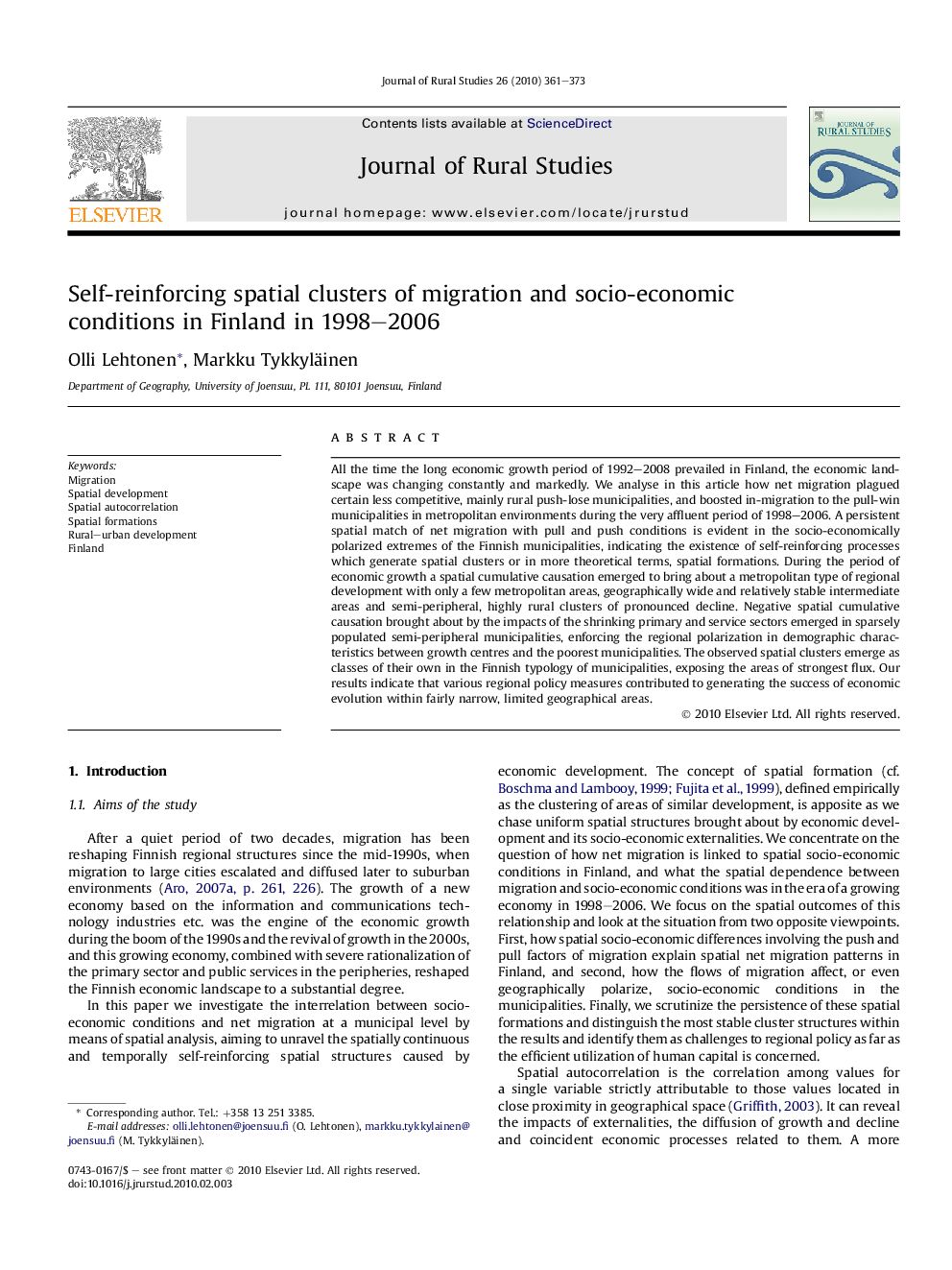| Article ID | Journal | Published Year | Pages | File Type |
|---|---|---|---|---|
| 92760 | Journal of Rural Studies | 2010 | 13 Pages |
All the time the long economic growth period of 1992–2008 prevailed in Finland, the economic landscape was changing constantly and markedly. We analyse in this article how net migration plagued certain less competitive, mainly rural push-lose municipalities, and boosted in-migration to the pull-win municipalities in metropolitan environments during the very affluent period of 1998–2006. A persistent spatial match of net migration with pull and push conditions is evident in the socio-economically polarized extremes of the Finnish municipalities, indicating the existence of self-reinforcing processes which generate spatial clusters or in more theoretical terms, spatial formations. During the period of economic growth a spatial cumulative causation emerged to bring about a metropolitan type of regional development with only a few metropolitan areas, geographically wide and relatively stable intermediate areas and semi-peripheral, highly rural clusters of pronounced decline. Negative spatial cumulative causation brought about by the impacts of the shrinking primary and service sectors emerged in sparsely populated semi-peripheral municipalities, enforcing the regional polarization in demographic characteristics between growth centres and the poorest municipalities. The observed spatial clusters emerge as classes of their own in the Finnish typology of municipalities, exposing the areas of strongest flux. Our results indicate that various regional policy measures contributed to generating the success of economic evolution within fairly narrow, limited geographical areas.
